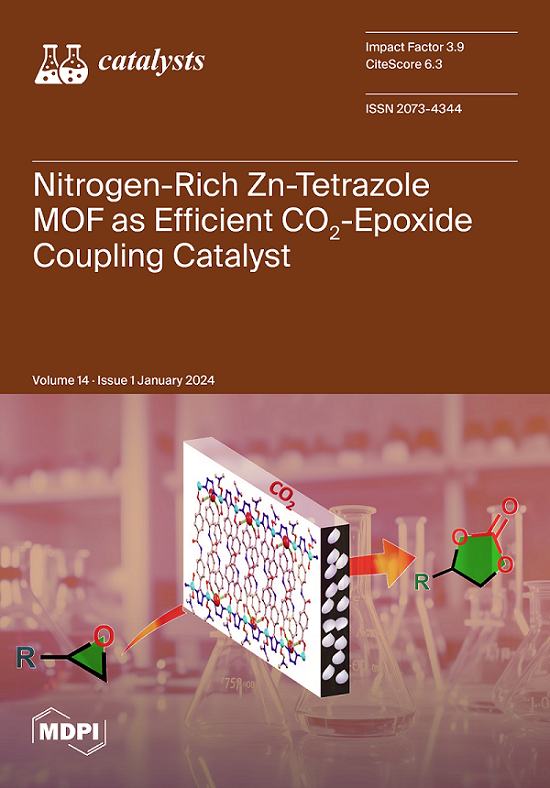用中尺度阳离子聚合物模板化的微米级β沸石作为乙酸酐酰化苯甲醚的强效催化剂
IF 4
3区 化学
Q2 CHEMISTRY, PHYSICAL
引用次数: 0
摘要
分层 Beta 沸石具有相互连接的晶内中孔和较高的结构稳定性,在涉及大体积反应物的催化应用中极具吸引力。在这里,通过在初始合成体系中引入适量的聚二烯丙基二甲基氯化铵,水热法合成了具有丰富分层孔隙率的微米级 Beta 沸石晶体(Beta-H)。名为 Beta-H_1 的样品在苯甲醚与乙酸酐的 Friedel-Crafts 乙酰化反应中表现出极高的催化活性和耐久性。在固定床反应器中反应 1 小时后,醋酸酐的转化率可达 92%,10 小时后转化率仍为 71%,远高于传统 Beta 沸石的转化率(后者在 10 小时内从 85% 迅速降至 37%)。Beta-H 沸石催化性能的提高主要归功于分层沸石相对较低的强酸密度和较快的传输速率。此外,Beta-H 还表现出较高的结构稳定性,并且可以通过高温煅烧轻松再生,而不会明显丧失催化活性,这表明它在工业上重要的 Friedel-Crafts 丙烯酸化过程中具有巨大的催化应用潜力。本文章由计算机程序翻译,如有差异,请以英文原文为准。
Micron-Sized Hierarchical Beta Zeolites Templated by Mesoscale Cationic Polymers as Robust Catalysts for Acylation of Anisole with Acetic Anhydride
Hierarchical Beta zeolites with interconnected intracrystalline mesopores and high structural stability are highly attractive for catalytic applications involving bulky reactants. Here, by introducing a suitable amount of polydiallyldimethylammonium chloride into the initial synthesis system, micron-sized Beta zeolite crystals with abundant hierarchical porosity (Beta-H) were hydrothermally synthesized. The sample named Beta-H_1 exhibited very high catalytic activity and durability for the Friedel–Crafts acylation of anisole with acetic anhydride. A 92% conversion rate of acetic anhydride could be achieved after 1 h of reaction in a fixed bed reactor, and 71% conversion still remained after 10 h, much better than the rate for conventional Beta zeolite (which decreased rapidly from 85% to 37% within 10 h). The enhanced catalytic performance of Beta-H zeolites could be mainly attributed to the relatively lower strong acid density and the faster transport rate of the hierarchical zeolites. In addition, Beta-H showed high structural stability and could be easily regenerated via high-temperature calcination without obvious loss in catalytic activity, demonstrating its great potential for catalytic applications in the industrially important Friedel–Crafts acylation process.
求助全文
通过发布文献求助,成功后即可免费获取论文全文。
去求助
来源期刊

Catalysts
CHEMISTRY, PHYSICAL-
CiteScore
6.80
自引率
7.70%
发文量
1330
审稿时长
3 months
期刊介绍:
Catalysts (ISSN 2073-4344) is an international open access journal of catalysts and catalyzed reactions. Catalysts publishes reviews, regular research papers (articles) and short communications. Our aim is to encourage scientists to publish their experimental and theoretical results in as much detail as possible. Therefore, there is no restriction on the length of the papers. The full experimental details must be provided so that the results can be reproduced.
 求助内容:
求助内容: 应助结果提醒方式:
应助结果提醒方式:


